Seaside Marmots and A Family’s Trip Around the Cook Inlet
Erin McKittrick and Bretwood Higman (Hig) are Alaskan adventurers with a love for coastlines and many thousands of miles of Alaskan wilderness under their belts. They founded the organization Ground Truth Trekking to educate and engage the public onAlaska’s natural resource issues through human-powered expeditions and scientific data collection. They are accompanied on expeditions by their two small children. Erin is the author of two books on their journeys: A Long Trek Home and Small Feet, Big Land.
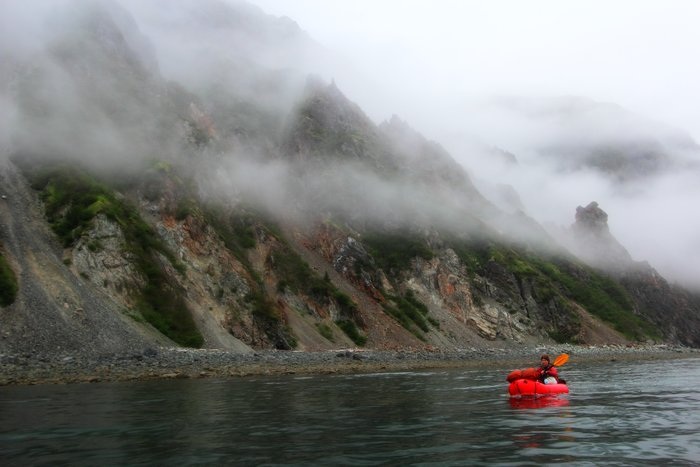
Packrafting along Fortification Bluffs. Photo by Erin McKittrick.
From Erin:
I’ve heard them called whistle-pigs. Or bear milk duds. Marmots are responsible for the piercing whistles that burst out from boulder piles along many an alpine ridge. They are the fuzzy, chubby guinea pig-like rodents, posing on rocky ledges. They are almost unreasonably cute. And we spent our whole trip searching for them.
Of course, the marmots were only a footnote. We walked and packrafted for three and a half months, tracing a line of 800 miles along the shore of Cook Inlet with our two-year-old and four-year-old children. Cook Inlet is the heart of modern Alaska. It has Native villages and Russian villages, hippie towns and tourist traps and Alaska’s biggest city. Cook Inlet is our home. It’s also home to oil rigs and natural gas plants, coal mine proposals, wind turbines and tidal power proposals not to mention endangered whales, abundant bears, salmon and melting glaciers. Lastly, it’s home to most of Alaska’s population, and hundreds of miles of nearly unpopulated wilderness.
And, quite likely, coastal marmots.
Why did we care? Truthfully, I wasn’t sure at first.
Hig: “There’s a researcher who’s really excited about us looking for coastal marmots around the inlet. Says our trip is perfect for it.”
Erin: “Is there even any such thing as a coastal marmot?”
Hig: “Well, I know there was one that lived at White Rock Beach when I was a kid, but I always thought he was kind of a fluke.”
Erin (shrugging): “I guess we can keep our eyes out.”
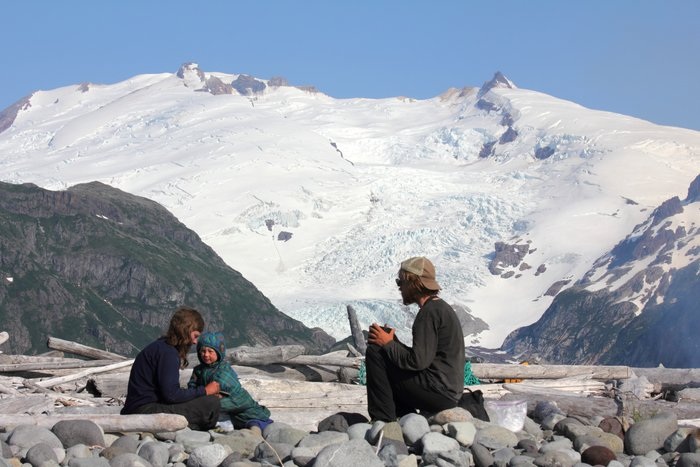
Glaciers of Mt Douglas rise as our backdrop. Photo by Erin McKittrick.
Ice frosted the cliffs of outer Cook Inlet. Blizzards battered us along the rocky shores of southern Kachemak Bay. In the bitter cold of March and April, we forgot about the marmots. If they existed at all, they were surely hibernating.
We forgot about them through the sandy bluffs of the Kenai Peninsula, and the vast marshy mudflats of upper Cook Inlet. And by the time we started seeing the ground squirrels in Ursus Cove, I’d given up on seeing them at all.
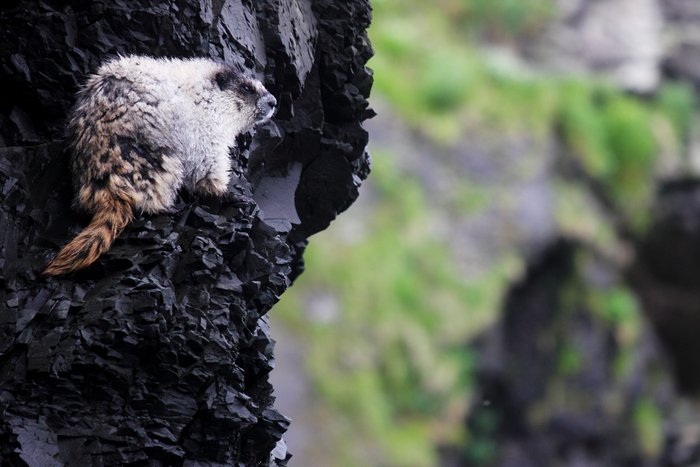
Marmot on a sea cliff. Photo by Erin McKittrick.
The researcher interested in coastal marmots,
Link Olson, had gotten in touch with us through Adventurers and Scientists for Conservation (ASC).
It’s hard for adventure to make time for science; Hig and I have worn both hats before. And while we observe and learn a tremendous amount on each of our journeys, it tends to be far more qualitative than quantitative. It’s hard to take careful measurements if you can’t afford the weight of the tools, and need to get around that next point before the tide rises. The goal of getting everyone from A to B in one piece takes priority, and every additional goal (writing, photography, science, video) has to fight for its place. Even on this journey, we had some failure mixed in with our success working on another ASC project — taking water samples from glacial rivers in permafrost regions under circumstances where we couldn’t get them back to the appropriate lab in time to be analyzed.
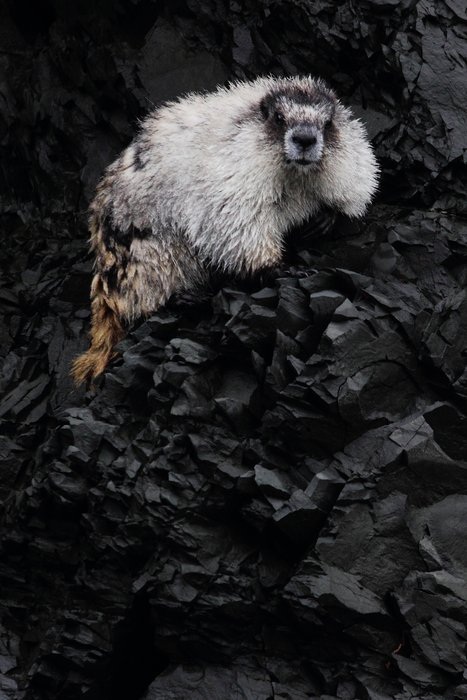
This marmot alternately scrambled and swam, trying to get around the shore at high tide. Photo by Erin McKittrick.
The first marmot was sent as an emissary, the morning after I’d finally declared my disbelief in the concept of coastal marmots. I raced across beach greens and logs in my socks, grabbing the camera to photograph it posing on a ledge just above my mother’s tent. It surveyed us from the ledge for most of the morning, then eventually scurried off down the beach, scrambling, swimming, and backtracking as it struggled with the high tide. I’d never seen a marmot swim.
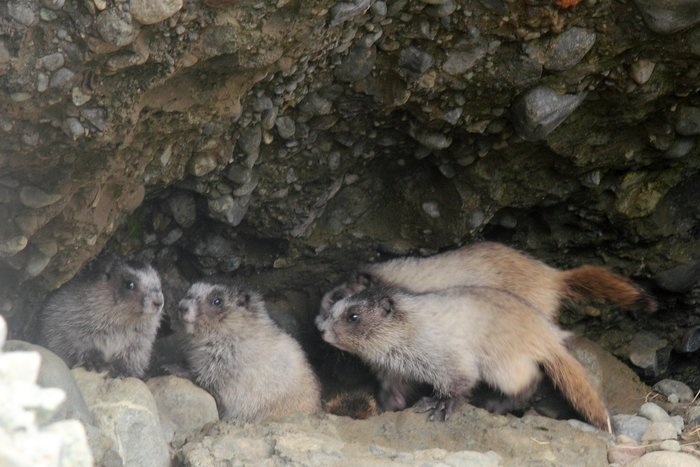
Hoary marmot pups in their coastal burrow. Photo by Erin McKittrick.
Finding marmots became like treasure hunting. I always love seeing wildlife. But the idea that someone cared about these marmots specifically–that he was looking to us for proof of their existence in remote spots that others might not get to–made it all the more fun. We didn’t get much. But a few days later, we took the first photos of sea-level marmot pups.
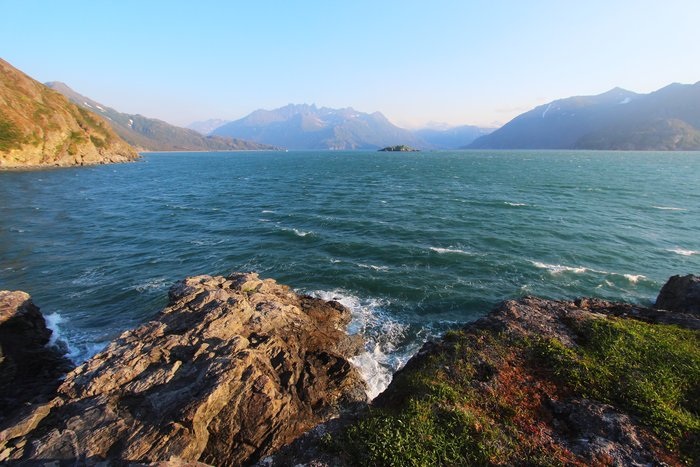
Looking out from a campsite near Iliamna Bay. Photo by Erin McKittrick.
What will this lead to? Summarizing from Link’s emails: “Hoary marmots are generally thought of as being restricted to alpine habitats. But in Alaska, they’re not. How have they managed to occupy such a different habitat? How widespread are these coastal dwellers? And, since alpine ecosystems are the first to be impacted by climate change, what can these coastal marmots teach us about the resilience and adaptability of alpine animals?” Only time will tell, but it is wonderful to have been able to contribute to important scientific research during our expedition.
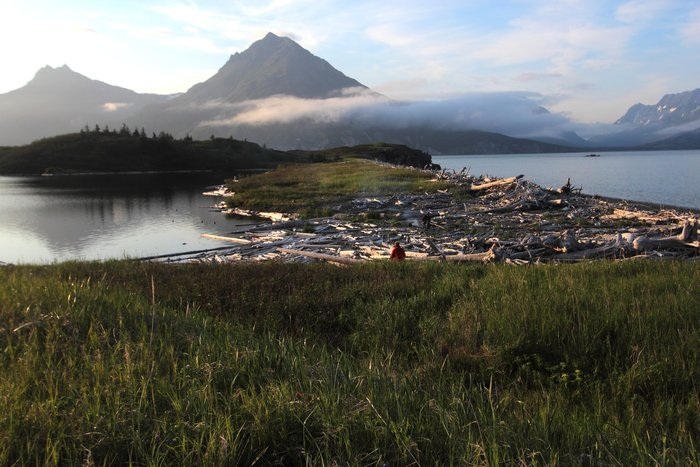
A lake dammed off from the ocean near Ursus Cove. Photo by Erin McKittrick.
You can find out more about ASC and the work we are doing around the globe here on our website. Also make sure to follow us on Twitter and like us on Facebook to stay abreast of all the latest and greatest developments with ASC and to hear more about the scientists and adventurers who make our work possible.







